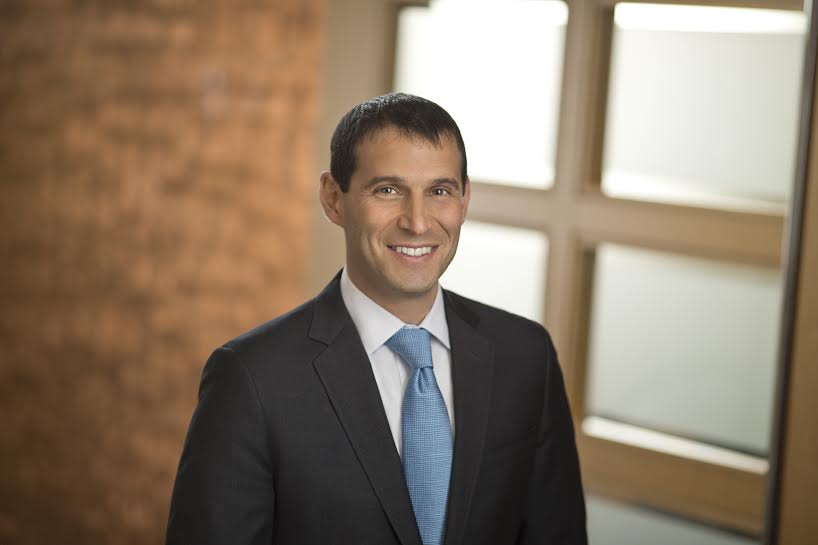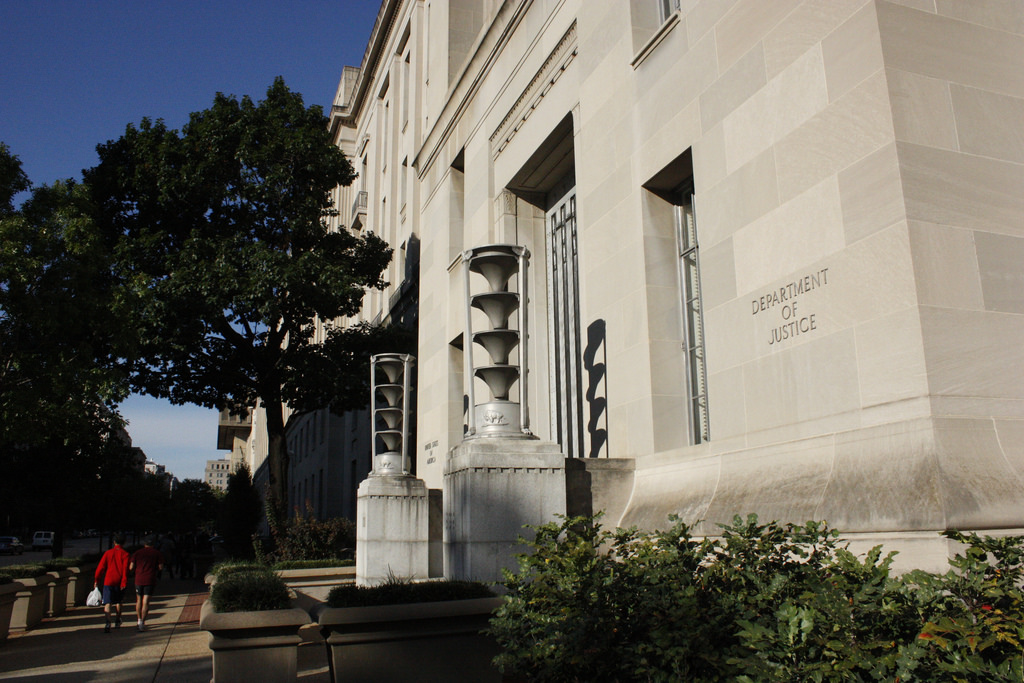Best <s>Military Intelligence Foreign Policy</s> Political Advice: The Problem With National Security Presidential Memorandum 2
In 2012, I witnessed a scene that has been on my mind this week: then-Deputy National Security Advisor Denis McDonough reprimanded a less experienced staffer for merely referencing the ongoing reelection campaign during a mid-level NSC policy meeting. Why? Because, he said, “politics have no place in the Situation Room.”
Published by The Lawfare Institute
in Cooperation With

In 2012, I witnessed a scene that has been on my mind this week: then-Deputy National Security Advisor Denis McDonough reprimanded a less experienced staffer for merely referencing the ongoing reelection campaign during a mid-level NSC policy meeting. Why? Because, he said, “politics have no place in the Situation Room.”
We face a different question today: should the President’s chief political strategist play not merely a glancing role but an active and sustained role in the national security policy-making processes overseen by the National Security Council (“NSC”)? Until earlier this week, no administration of either political party had answered that question in the affirmative, largely because the NSC is regularly called upon to address life or death issues that transcend momentary news cycles or opinion polls. President Trump’s January 28, 2017 reorganization of the NSC, via National Security Presidential Memorandum 2, casts aside that norm by elevating Chief White House “Strategist” Steven Bannon to a permanent role as an attendee at all NSC meetings, and as a regular attendee at all Principals Committee (“PC”) meetings.
|
If you are finding Lawfare useful in these times, please consider making a contribution to support what we do. |
Separate from the concerns that some have expressed regarding Bannon’s ideology or his qualifications to serve in his new role, the decision to install the White House’s chief political strategist as a key decision maker within the NSC policy process is an ill-conceived decision that threatens to politicize the NSC policy-making process from top to bottom.
The President has broad discretion to select his advisors and structure his staff in the manner best suited to his management style. The NSC, however, is unlike other parts of the Executive Office of the President; it is a creature of statute, with statutorily-prescribed membership requirements, and has a specific mission that is enshrined in federal law. Congress established the NSC via the National Security Act of 1947, which provides that the purpose of the Council is “to advise the President with respect to the integration of domestic, foreign, and military policies relating to the national security so as to enable the military services and the other departments and agencies of the Government to cooperate more effectively in matters involving national security.”
Administrations from Truman to Obama have structured their NSC staffs and policy-making processes differently, but one constant aspect of the NSC throughout its history has been the existence of a process structured to provide the President with the best military, intelligence, and foreign policy advice on matters of national security. To provide the President with the best advice of the federal government on complex issues of national security, which often involve the interests and expertise of more than one agency, the NSC manages a multi-tiered policy process that is designed to narrow the issues necessary for decision by the President, consider the views of all federal agencies with interests in a given issue, and, where possible, achieve interagency consensus.
The Principals Committee, in particular, was designed to serve as the “senior interagency forum for consideration of policy issues affecting national security.” Its function is to assemble all of the views of the interagency, and to distill what are often divergent positions into coherent recommendations on which the President may choose to act. At times, these policy discussions are dense and plodding; at other times, they involve life-or-death decisions regarding foreign military operations. But regardless of the issue at hand, the goal of the process is to provide the President with the best advice of his available options from his military, intelligence, and foreign policy professionals.
The professional advice that results from the NSC policy process has never been, and can never be, perfectly insulated from politics, but it is designed to be as free from political influence as possible. President George W. Bush reportedly instructed Karl Rove not to attend any NSC meetings, for fear that his presence would suggest that life or death decisions were being made based upon politics.
The argument that President Obama took similar action to Trump’s order by allowing his chief political advisor, David Axelrod, to observe a limited number of NSC meetings is frivolous; there is a difference in both degree and kind between observing, by invitation, a limited number of NSC meetings from the back bench, on the one hand, and being a decision-maker in all PC meetings, on the other.
The law does not require the NSC to follow a strictly non-political process, but that approach is unquestionably desirable as a matter of policy for at least three reasons:
First, better advice yields better decisions, and political considerations will erode the quality of advice the President receives from his national security professionals. The President deserves to know whether an emerging issue constitutes a genuine threat, and how that threat (if it exists) can or cannot be adequately addressed or mitigated. Whether a terrorist organization intends to launch an attack against the United States is a factual assessment with political implications—and while the President is entitled to consider those political implications, his understanding of the likelihood of an attack should not be polluted by the political fallout that such an assessment may cause. To take another example, consider the President’s view, which he frequently stated on the campaign trail, that the United States should have seized Iraq’s oil after toppling Saddam Hussein’s regime. Were he to consider such an action now, his decision would undoubtedly be better informed were he first to receive the military’s best advice regarding the efficacy and consequences of such action separate from the political considerations associated with adhering to his campaign rhetoric. In sum, the President will have better information from which to assess threats and fashion responses if he receives unfiltered national security advice.
Second, an independent national security policy process protects the President. A process in which agency “equities” are debated and weighed is one that is more likely to produce consensus and reduce internal dissent than one in which the merits are subordinated to political calculations from the start. National security professionals do not expect that their views will always carry the day with political leadership, but they do expect at least to have their views considered. If that does not happen, destructive infighting and leaks will be more likely, and the President will become more vulnerable to charges that he risked (or lost) American lives for political gain.
Third, separating politics from national security policy protects the NSC staff, which is comprised largely of career military, intelligence, and diplomatic professionals who are on loan from the interagency. Those professionals have dedicated their lives to serving their country, and they deserve to know that their expertise is valued, that their advice is considered on the merits, and that their expertise is not being used to promote a political agenda. Injecting politics into the NSC process will inevitably reduce staff morale, lead to unnecessary turnover, and produce a less capable and effective workforce.
All this brings us back to National Security Presidential Memorandum 2, which risks all of the dangers described above by simultaneously inserting the White House’s chief political strategist into a central role in the NSC process and demoting the roles of the Director of National Intelligence (“DNI”) and Chairman of the Joint Chiefs of Staff. Specifically, the Memorandum enshrines Bannon with a permanent decision-making role at every PC meeting, and invites Bannon to be present at every NSC meeting; meanwhile, the DNI and Chairman of the Joint Chiefs have been demoted from their roles as “regular members” of the PC and instead will attend only “where issues pertaining to their responsibilities and expertise are to be discussed.”
In light of the fact that the PC is the “senior interagency forum for consideration of policy issues affecting national security,” the Memorandum sends an ominous message. Namely, by granting his chief political strategist a permanent seat at the table, but making the DNI and Chairman of the Joint Chiefs invitation-only participants, President Trump has declared that his political strategist has more important “responsibilities and expertise” over the “policy issues affecting national security” than the DNI or the Chairman of the Joint Chiefs. That prioritization is absurd – nearly all PC meetings do raise issues that intersect, in one way or another, with the responsibilities and expertise of the DNI, who speaks for the intelligence community, and the Chairman of the Joint Chiefs, who speaks for the uniformed military. The same cannot be said for the President’s chief political strategist, whose only arguable institutional interests (the President and the White House) are already represented within both the PC and NSC processes.
Some have criticized the Memorandum on the basis of Bannon’s qualifications to serve in his newfound role. But whether Bannon’s service in the Navy somehow qualifies him to make complex foreign policy decisions is something of a distraction—the more salient point is that the hat Bannon wears in this White House should make his participation in the NSC process inappropriate. The President has already raised more than $7 million for his 2020 reelection bid, and has filed an official statement of his 2020 candidacy with the Federal Election Commission. Bannon will likely be the point person for that reelection bid, and reportedly has already begun to focus on the 2018 midterms. It is inconceivable that Bannon can participate in the NSC policy-making process without inserting his political and communications views into assessments of emerging threats, diplomatic disputes, or military options. If Bannon’s political views change the outcomes of PC meetings even modestly, the President and the country will less safe, and public faith in our national security professionals will be further undermined.
The President is, of course, entitled to have his political strategist advise him regarding any action he is asked to consider. The problem with the structure President Trump has adopted is not that his chief strategist plays an important role in his decision-making process – rather, the problem is where Bannon has been placed in that process. Bannon’s permanent seat on the PC will make it difficult for the interagency to offer its best military, intelligence, and foreign policy advice to the President, while simultaneously undermining the role of the National Security and Homeland Security Advisors. The theoretical risks described above are magnified by Bannon’s hard-edged political and ideological predispositions, his penchant for crediting and promoting conspiracy theories, and the joy he appears to derive from advancing provocative anti-establishment arguments and rhetoric. All of this is fundamentally incompatible with the order and stability the NSC process is designed to promote. The breakdown of that process will, sadly, leave us all less safe.



-(1).jpeg?sfvrsn=143eb65_5)
